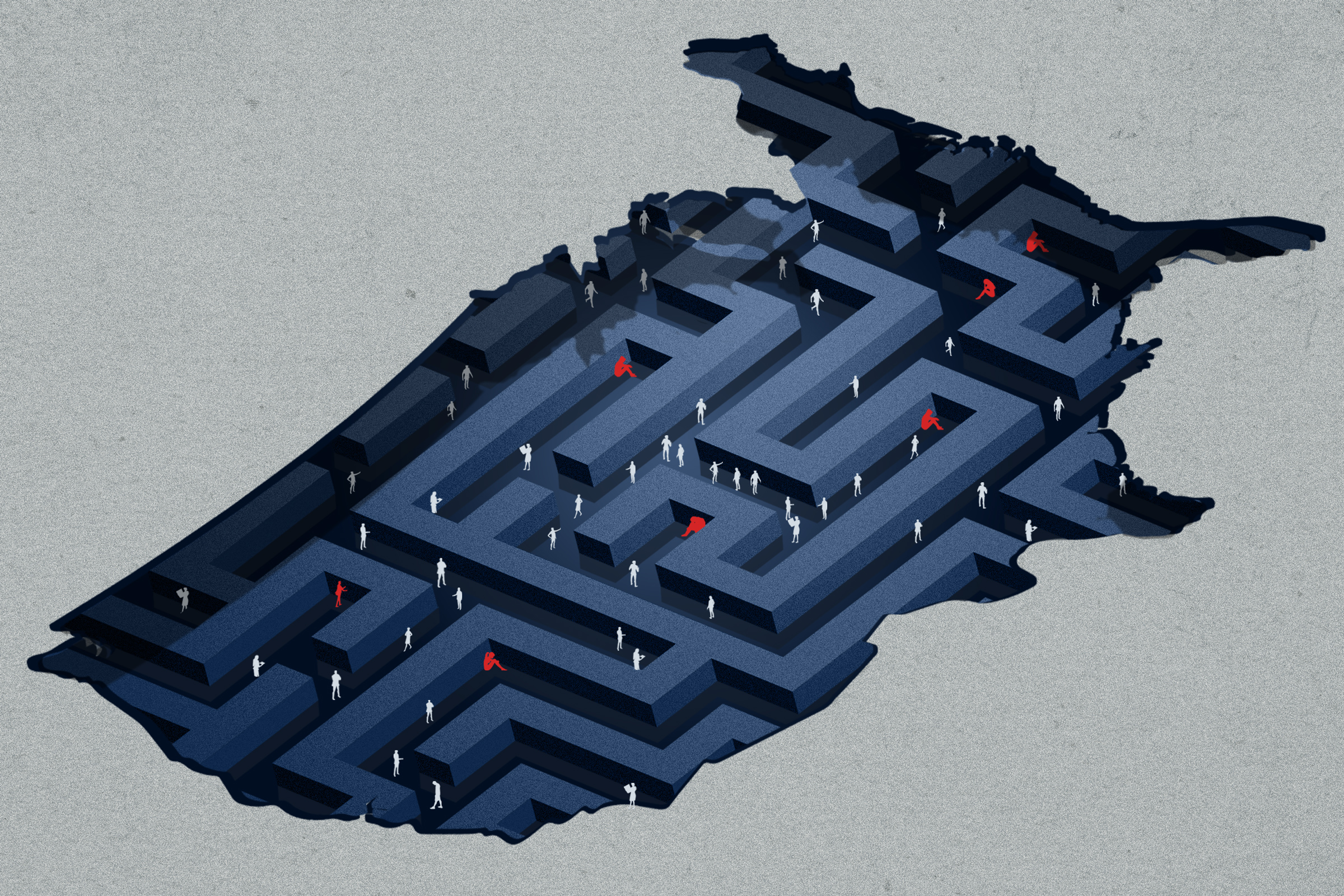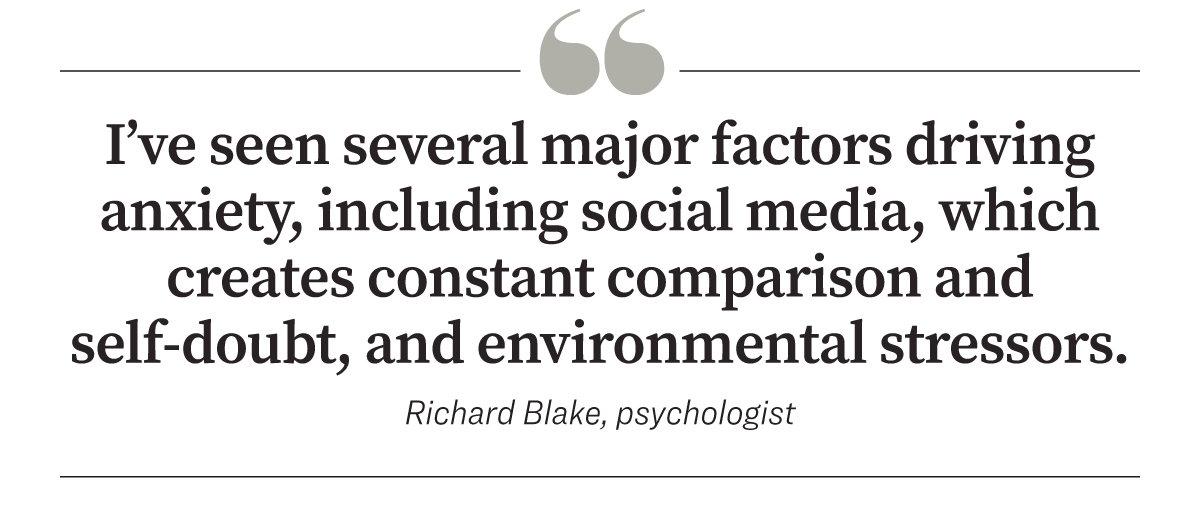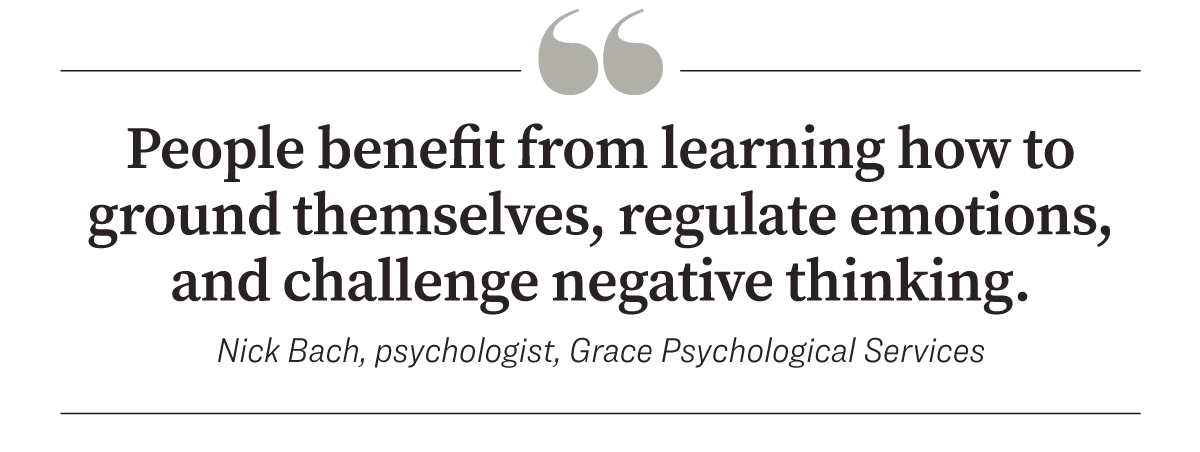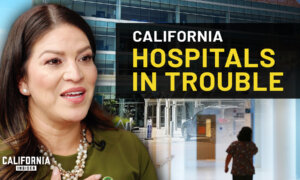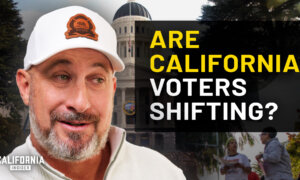By most metrics, mental health in the United States has suffered greatly since the onset of the COVID-19 pandemic. This year, health professionals are reporting spikes in anxiety and depression in U.S. adults.
However, experts say there’s a silver lining: People are now more willing to seek help and explore treatment options.
Anxiety is among the most commonly diagnosed mental illnesses, affecting around 40 million U.S. adults, according to Advanced Psychiatry Associates. A range of recognized conditions fall under this umbrella, including generalized anxiety disorder, panic disorder, social anxiety, and separation anxiety.
“I’ve personally seen an uptick in clients struggling with anxiety disorders, especially over the last year,” psychologist Nick Bach told The Epoch Times by email. Bach works with Grace Psychological Services in Louisville, Kentucky.
Beyond the increased patient load, he’s also witnessed a more recent trend: clients with anxiety disorders who initially improve, but later return to his office with worsening symptoms. He attributes much of this to economic uncertainty and increased exposure to news and social media.
“In my experience, one of the major changes is the intensity and frequency of anxiety episodes,” Bach said. “More people are dealing with health anxiety, job insecurity, and social isolation. ... I think that increased exposure to social media, where people compare themselves or feel overwhelmed by constant news, has also been a significant factor.”
Mental health outpatient therapist Elizabeth Douglas said she has also seen a surge in anxiety disorders and depression.
“There are noticeable changes,” Douglas told The Epoch Times in a text. ”Mental health concerns—especially anxiety, depression, and burnout—have worsened for many.”
At her Minneapolis-based practice, Yellow Wallpaper, Douglas has observed multiple factors creating heightened levels of anxiety and depression in her clients.
Among these is chronic stress from “prolonged uncertainty” related to economic, social, and political changes. Social isolation, shifts in human interactions, and job burnout also play a role, she said.
Anxiety disorders and depression often go hand in hand, according to the Centers for Disease Control and Prevention.
While an estimated one out of every six Americans will likely experience depression at some point, major depressive episodes are more severe.

In 2021, an estimated 21 million American adults experienced at least one major depressive episode, according to the National Institute of Mental Health and based on findings from the 2021 National Survey on Drug Use and Health. Women were more affected than men in every age category, and the highest prevalence of major depression occurred in adults in the 18- to 25-year-old age group.
In May, the American Psychiatric Association reported significant spikes in anxiety among American adults, compared with the group’s 2023 poll.
From a survey group of more than 2,200 adults, 43 percent said they feel “more anxious” in their lives than they did the previous year.
This is up from 37 percent in 2023 and 32 percent in 2022. Respondents identified current events, the economy, the upcoming U.S. presidential election, and gun violence as contributing factors to the increase.

A woman wearing a mask walks on the street during the pandemic lockdowns, in New York City on March 13, 2020. (Jeenah Moon/Getty Images)
Some health professionals believe this trend is part of the broader rise in mental health challenges observed during the pandemic. Researchers estimate that more than one in five U.S. adults live with a mental illness, according to the National Institute of Mental Health.
According to the Substance Abuse and Mental Health Services Administration, an estimated 57.8 million Americans aged 18 or older are living with a mental illness. Taken at face value, that number represents nearly a quarter of all adults in the United States.
Information Saturation
American Psychiatric Association President Petros Levounis said that anxiety derived from constant information bombardment is expected.“But what stands out here is that Americans are reporting more anxious feelings than in past years,” he said in a May statement marking the release of the association’s annual mental health poll. “This increase may be due to the unprecedented exposure that we have to everything that happens in the world around us or to an increased awareness and reporting of anxiety.”
This tracks with what other mental health professionals have discovered. Douglas said social media and lifestyle comparison are key parts of the problem.
“Increased exposure to curated realities has led to feelings of inadequacy and fear of missing out,” she told The Epoch Times.
Elvis Rosales, clinical director of California-based Align Recovery Centers, said he’s noticed a “significant increase” in clients reporting anxiety issues in the past two years. It’s a trend, he said, that appears to be accelerating.
“The constant uncertainty that people are experiencing, whether related to global events, economic stressors, or health concerns, is pushing many to their emotional limits,” he told The Epoch Times in an email.
“Anxiety often arises when individuals feel they’ve lost control over their environment, and given the nature of today’s world, it’s no wonder anxiety is becoming more prevalent.”
Social media have long been linked with potential negative mental health impacts across the age spectrum. Studies haven’t yielded consistent results, but researchers still express concern over a potential correlation between social media usage and illnesses such as depression and anxiety.
Bach, Douglas, and Rosales all said their clients suffer adverse effects from near-constant exposure to news events, which can be overwhelming.

Exposure to news events and social media correlates to illnesses such as depression and anxiety, reserachers say. (Alex Potemkin/Getty Images)
“Clients also talk about the relentless exposure to negative news cycles, which creates a constant sense of fear and helplessness,” Rosales said.
Psychologist Richard Blake has also noticed this trend. “I’ve seen several major factors driving anxiety, including social media, which creates constant comparison and self-doubt, and environmental stressors,” he told The Epoch Times in a text. “Our world is more toxic than it was decades ago, from pollution to constant digital stimulation.”
Blake conducted the largest randomized control trial on conscious-connected breathwork and its effects on anxiety.
According to him, there’s an irony in the increase in mental illnesses.
“Although many metrics suggest that we are safer than ever before in the United States, people’s anxiety has spiked,” he said. “This may be due to the fact that as we’ve become more affluent and secure, we’ve lost a degree of resilience, making us less equipped to handle even minor stressors.”
Blake said that the rise in diagnosed anxiety disorders may also be due, in part, to a broadening of the clinical term. He said some psychologists refer to this as “concept creep,” which means more people fit into a given category since the criteria have expanded.
“Additionally, there’s a new phenomenon where increased discussions around mental health may have contributed to the rise of psychological hypochondriacs—people who, due to constant exposure to mental health conversations, begin to misinterpret normal emotions as symptoms of illness,” Blake said.
“The rise in anxiety, however, is a multifaceted issue that extends beyond mere symptoms. There are deeper societal and psychological trends at play.”
Ray of Hope
Despite more U.S. adults reporting issues around anxiety and depression, experts say positive strides in destigmatizing mental illness have made a difference.The result has been more people willing to seek help for mental health concerns. Behavioral health, which encompasses care for mental illnesses, is a burgeoning facet of the health care industry.
In a 2023 Trilliant Health report, researchers forecasted that 25 percent of Americans would need access to some kind of mental health treatment by 2026.
This demand outcome is also reflected in the 2024 U.S. Bureau of Labor Statistics growth projections for mental health-related occupations and industries, both of which have expanded over the past decade. The agency stated that “strong growth” in this sector is expected to continue through 2032.

Mindfulness, meditation, and physical activity are among some of the tools that are useful to manage depression and anxiety, according to a mental health expert. (Oleksii Pidsosonnyi/The Epoch Times)
With this expansion comes access to newer (or older), nonpharmacological approaches to treatment.
Blake said his research into conscious-connected breathwork—a circular breathing technique—has proven itself to be an “incredibly effective” tool for managing anxiety and depression.
“In my study, we found that breathwork had a large effect size in reducing clinical levels of anxiety, offering a promising new treatment option,” Blake said. “Traditional methods like therapy and mindfulness remain essential, but many clients benefit from a multifaceted approach that includes building resilience through nervous system regulation techniques. Breathwork, in particular, helps clients reconnect with their bodies and regulate their emotional responses.”
Bach, Douglas, and Rosales have each observed that cognitive behavioral therapy, which is self-modification of negative thought patterns, also has a positive impact.
“What I’ve found helpful for many of my clients is emphasizing cognitive-behavioral therapy and mindfulness techniques,” Bach said. “I think people benefit from learning how to ground themselves, regulate emotions, and challenge negative thinking.”
Douglas said that additional tools that help her clients manage depression and anxiety include mindfulness, meditation, physical activity, a structured daily routine, and an external support network.
However, she said, for some, “medication remains a vital component in their treatment plan.”
Rosales said, “Teaching clients to identify and challenge their anxious thoughts can lead to significant improvements in their daily functioning.”
He observed that in the past year, he’s seen an uptick in clients seeking more holistic therapies such as acupuncture, nutritional changes, art, and music.
“I think this reflects a growing understanding that mental health care needs to be comprehensive and cater to the individual’s entire well-being, not just the symptoms of anxiety or depression,” he said.
Douglas and Rosales also noted that the rise in telehealth services has created greater access to care.

More than 60 percent of rural Americans live in areas with shortages of qualified mental health care providers, according to a 2020 study. (SDI Productions/Getty Images)
This is vital, because lack of access to mental health services has been identified as a significant problem. In its 2024 report, Mental Health America stated there were an estimated 340 people for each mental health care provider in the United States. The organization also noted that more than 27 million Americans experiencing mental illness went untreated in 2022.
There’s also an ongoing disparity in access between urban and rural parts of the country that has persisted for years. In a 2020 study published in the Journal of Clinical and Translational Science, researchers noted that more than 60 percent of rural Americans live in areas with shortages of qualified mental health care providers.
The Rural Health Information Hub states that people in non-urban areas often travel long distances to receive services, and health care providers are less likely to recognize a mental illness in rural residents.
Blake, Bach, Douglas, and Rosales all agreed that a greater willingness to seek help for mental health challenges is progress, but Rosales said there are still obstacles that need to be addressed.
“There’s still a long way to go in terms of ensuring everyone has access to the care they need,” Rosales said. “More robust mental health education, continued destigmatization, and affordable treatment options are essential to maintaining this progress.”
